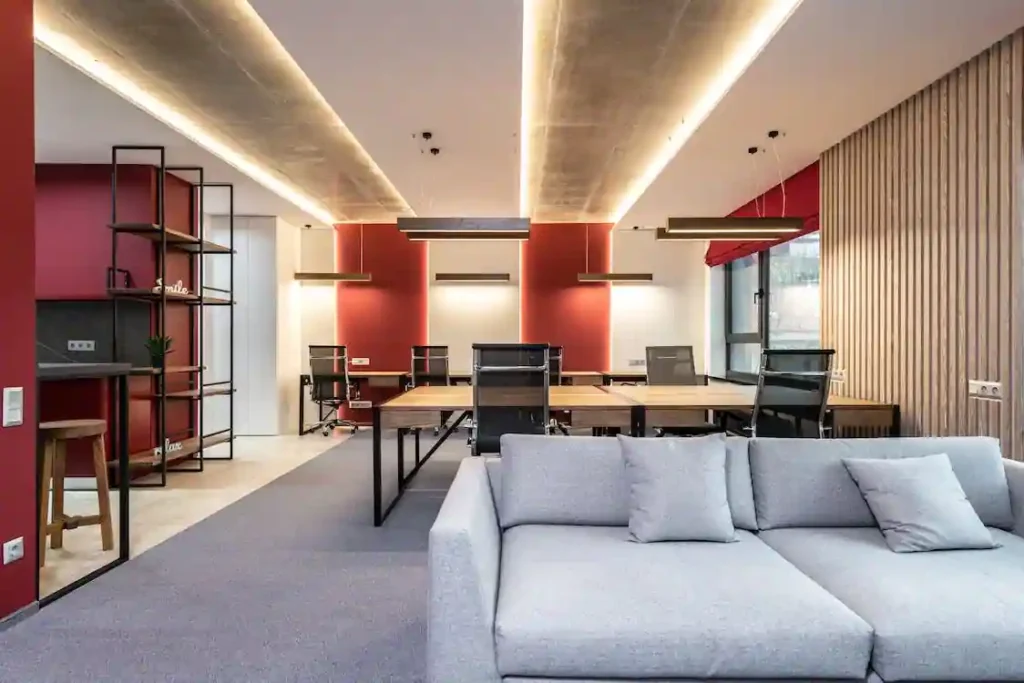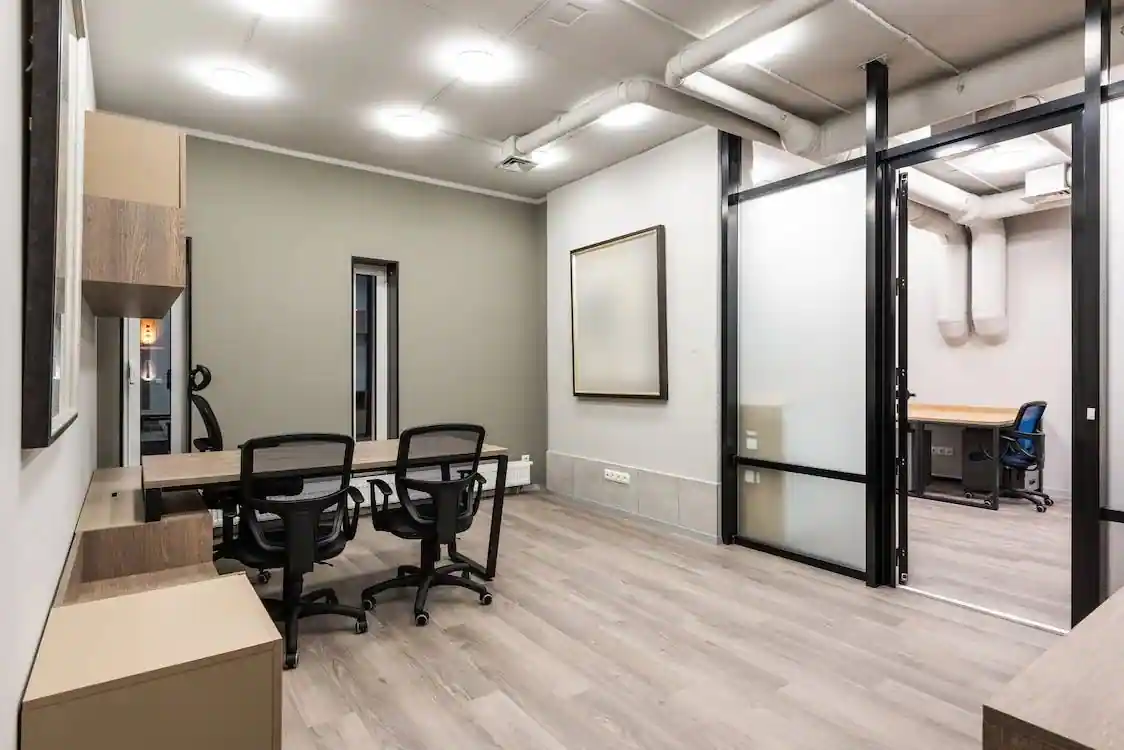Domestic sound insulation and Soundproofing material as well as insulation material are essential components of building and design that contribute to the creation of cosy and useful living areas with environmentally friendly quality. To maintain privacy, lessen noise problems, and improve general quality of life, sound transmission must be managed whether in a commercial, residential, or industrial situation. So, here We will examine the ideas of sound insulation and soundproofing, as well as the main distinctions between them, in this extensive tutorial. We will examine their tenets, strategies, resources, and uses to give readers a comprehensive grasp of how to control sound in residential settings.
What Is Sound Insulation
Sound insulation, sometimes called sound isolation or soundproofing, is the process of reducing the amount of sound that enters a room from outside sources or travels between areas. It involves putting policies in place to stop sound waves from passing through doors along with windows, ceilings, floors, as well as walls. The purpose of sound insulation is to produce acoustically isolated spaces that are considerably less noisy outside, giving residents a calm living space.
What is Sound Insulation – Fundamentals and basic principles of Sound Insulation
The fundamental characteristics of sound insulation as well as the laws governing sound transmission serve as the foundation for the concepts of sound insulation. Waves of sound propagate through a variety of media, such as liquids, solids, and the air.
Sound can go through a material barrier in one of three ways: by reflection, absorption, or transmission. To effectively insulate against sound, sound waves must be diverted and their capacity to travel through building materials must be reduced.
Techniques for Soundproofing

Following are the main techniques of soundproofing, you should read detailed information about, how it works, you can read the post, Soundproofing Office Ceiling–
Mass:
Adding weight to the walls, floors and ceilings of a building can help reduce the propagation of sound. Sound can be attenuated more effectively by heavier materials like concrete, brick, and gypsum board than by lighter ones like wood or plasterboard.
Decoupling:

To lessen the transmission of sound waves, decoupling entails separating architectural elements. Sound can be prevented from passing straight through structural connections by utilising staggered stud walls, isolation clips, or robust channels.
Damping:
Materials with this property absorb sound energy and lessen vibrations, which lowers the transmission of sound. Acoustic sealants, soundproofing membranes, and viscoelastic damping compounds are examples of common damping materials.
Sealing:
Sound insulation can be compromised by air leaks and holes in building assembly. Using acoustic sealants or gaskets to properly seal seams, gaps, and penetrations helps reduce sound leakage and enhances soundproofing effectiveness overall.
Absorption:
Although mostly related to sound absorption rather than insulation, interior spaces can benefit from the addition of acoustic panels, foam, or cloth to assist lessen reverberation and enhance sound quality.
Comparing Sound Absorbing and Soundproofing
Soundproofing vs Sound Absorbing
Two different ideas are employed in acoustics to control sound in a space: soundproofing and sound absorption. Even though they both seek to enhance the auditory environment, their goals and methods are distinct. So, here let’s go to examine each idea in more detail in the following passage-
Although the terms soundproofing and sound absorption are sometimes used synonymously, they have different functions when it comes to controlling noise in homes.
Soundproofing- soundproofing vs sound absorbing
The goal of soundproofing, sometimes referred to as noise management or sound insulation, is to stop sound from travelling from one area to another. The Soundproofing material helps to reduce the quantity of sound that enters or leaves space to preserve privacy and lessen noise pollution. In settings where noise from outside sources, such as traffic or industrial activity, may disrupt operations within the structure, soundproofing is especially crucial.
Soundproofing insulation material can help to, lower noise levels, it entails erecting barriers or other methods to isolate, block, or deflect sound waves. To reduce the number of sound transmission paths in a building, soundproofing techniques include sealing, decoupling, increasing bulk, and dampening.
Mass:
To stop sound waves from travelling, soundproofing materials are usually thick and heavy. Typically, soundproofing materials consist of strong doors, double-glazed windows, and thick walls.
Separation:
Building barriers or separating the sound source from its surroundings are common steps in soundproofing strategies. To lessen sound transmission, robust channels, insulation, or soundproofing membranes may be added to the walls, floors, and ceilings.
Sealing:
To stop sound from leaking out of a building, gaps, fissures, and apertures must be properly sealed. To provide a continuous barrier against sound transmission, this involves caulking gaps in walls and floors and sealing around doors and windows.
Decoupling:
To lessen the transmission of vibrations and sound waves, decoupling procedures entail separating structural parts. Resilient mounts, isolators, and floating floors and ceilings can all be used to achieve this.
Reflection:
Redirecting or absorbing sound waves to stop them from entering or leaving a location is another tactic used in soundproofing. Nevertheless, preventing sound from being transmitted rather than absorbing sound energy is the main goal.
To final line on, the goal of soundproofing is to erect a barrier that stops sound from escaping from one area to another, lowering the noise level in a room or structure as a whole.
Sound Absorption: Soundproofing vs sound absorbing
By absorbing sound waves rather than blocking them, sound absorption works to lessen echo and reverberation within a space. Sound energy is absorbed by acoustic panels, foam, cloth, and other porous materials to stop it from reflecting off hard surfaces. Sound absorption lowers noise levels increases voice intelligibility, as well as boosts overall acoustic comfort. So, you will get the soundproof quality.
Sound absorption, on the other hand, employs sound energy absorption to lower the intensity of reverberation and echoes within an area. While soundproofing tries to stop sound from entering a space, sound absorption concentrates on the sound waves that are already there. Important features of sound absorption consist of:
Porosity
Because they are lightweight and porous, sound-absorbing materials allow sound waves to enter and pass through them. Foam, fabric-covered baffles, perforated panels, and acoustic panels are common materials used for sound absorption.
Density Gradient
Materials that absorb sound frequently have a density gradient, with a lower density in the back and a higher density close to the surface that faces the sound source. This gradient aids in efficiently absorbing and releasing sound energy.
Acoustic Quality
Similar to soundproofing insulation material, sound absorption works to improve a space’s acoustic quality by lowering echoes and reverberation, which improves speech intelligibility and clarity without necessarily raising the noise level overall.
In conclusion, even though soundproofing and sound absorption are two different ideas, they are frequently combined to enhance a space’s acoustic qualities. Using a combination of sound-absorbing materials and soundproofing barriers, spaces that are peaceful and aesthetically beautiful can be designed to meet the unique needs and demands of their occupants.
Uses of Soundproofing and Sound Insulation in Residential Environments
Soundproofing and sound insulation are crucial in home settings to preserve privacy, reduce noise disruptions, and create cosy living spaces. These guidelines are used in many aspects of building and remodelling homes, such as:
Walls:
Sound-absorbing walls lessen the transfer of noise from nearby areas by preventing sound transmission between rooms. To improve wall insulation, robust channels, soundproofing membranes, and double-stud walls are frequently utilised.
Floors:
Reducing impact noise from activities such as furniture movement and footfall requires soundproofing floors. Underlayment materials, soundproofing matting, and floating floor systems are implemented to reduce noise transmission between levels and isolate floor vibrations.
Ceilings:
Airborne noise from above, such as footsteps, voices, and plumbing noise, can be reduced by soundproofing ceilings. Resilient clips, acoustic insulation, and suspended ceilings are used to block sound from passing through the ceiling assembly.
Windows and Doors: Domestic soundproofing

Sound-absorbing windows and doors are essential for preventing noise from outside sources including neighbours, aeroplanes, and vehicles. Laminated glass and weatherstripping on double or triple-pane windows reduce sound penetration, and solid-core doors sealed inside offer further soundproofing for interior areas.
Media rooms and home theatres: Soundproofing these spaces is crucial to getting the best audio quality and avoiding sound leaks. To produce immersive, high-fidelity listening spaces, specialised construction techniques, soundproofing materials, and acoustic treatments are used.
Bedrooms and Home Offices: By minimising noise disruptions from other parts of the house, sound-insulated bedrooms and home offices encourage peaceful sleep and increased productivity. Acoustic wall panels, carpets, and curtains are examples of soundproofing materials that should be strategically placed to produce calm, distraction-free environments.
Best Domestic Sound Insulation
The sort of noise you want to block, where the noise source is, your budget, building codes, and other considerations are all important when choosing the finest sound insulation materials for home use. The following list of materials for sound insulation, along with some frequent uses and characteristics,
Mineral Wool Insulation

Material: Mineral wool, sometimes referred to as glass wool or rock wool.
Properties: Impact and airborne noise can be effectively reduced by mineral wool insulation. It is reasonably priced and has great fire-resistant qualities. Mineral wool can be used for a variety of purposes because it is available in numerous shapes and sizes, including rolls, batts, and boards.
Insulation made of fibreglass:
Fibreglass Insulation- best domestic sound insulation
Properties: Fibreglass insulation has strong sound absorption qualities, is non-flammable, and is lightweight.
It is frequently used in floors, ceilings and walls to lessen the transmission of airborne noise. There are three types of fibreglass insulation: rolls, batts, and loose-fill.
Panels of Acoustic Foam
Material: Melamine or polyurethane-based open-cell foam.
Properties: Sound waves are absorbed by acoustic foam panels, which lessen room reverberation. They work well to enhance the acoustics of areas like music rooms, recording studios, and home theatres. Acoustic foam panels come in a variety of forms and hues, are lightweight, and are simple to install.
Vinyl with a mass load (MLV):
Material: Particle-laden, flexible vinyl sheets.
Properties: Dense and flexible, mass-loaded vinyl offers superior soundproofing against ambient noise. It is frequently employed as a barrier to stop noise from passing through ceilings, floors, and walls. Because MLV is thin, it can be placed beneath carpets, plasterboard or other finishing touches.
Sound-Resistant Plasterboard:- Domestic Soundproofing

Material: Standard plasterboard with additional layers of soundproofing.
Properties: Known by several names, including gypsum board and acoustic plasterboard, soundproof plasterboard is made specifically to lessen noise transfer between rooms. Usually, it is composed of several gypsum board layers encased in viscoelastic polymers or materials that absorb sound. Compared to regular plasterboard, soundproof plasterboard is heavier and thicker, offering better sound isolation.
Green Adhesion Agent:
Viscoelastic damping compound is the material.
Properties: A common soundproofing substance used to lessen noise transmission through ceilings and walls is green glue.
It is used as a sound-absorbing substance between sheets of plywood, plasterboard as well as other building materials to reduce vibrations. Green Glue is simple to use and has a big impact on how well-insulated older buildings are against sound.
Cork Insulation:- Domestic Sound Insulation
Material: Cork, which is extracted from cork oak trees’ bark.
Properties: Cork insulation has good acoustic and thermal insulation qualities. It is a naturally occurring renewable material. It is robust, lightweight, and safe for the environment. Walls, floors, and ceilings can all benefit from the use of cork insulation to lessen impact and airborne noise.
It is important to consider your unique needs when choosing sound-absorbing materials for home use and to seek professional advice if necessary.
To guarantee the efficiency and safety of the selected materials, take into account the installation procedure, compatibility with current buildings, and any applicable building codes or regulations.
Conclusion of Domestic Sound Insulation / Domestic Soundproofing and Soundproofing vs Sound Absorbing
To provide you a bottom line as well as sum up this post, we must say, that soundproofing as well as insulation are essential components of residential building and remodelling that help homeowners create tranquil, cosy spaces. Through comprehension of the fundamentals, techniques, and applications of sound insulation, people can better control the transfer of noise, optimise acoustic comfort, and raise their standard of living in residential environments. To shape the acoustical features of dwellings and ensure a calm and comfortable living environment, sound insulation and soundproofing are essential. They can reduce airborne noise, block impact sound, or control reverberation.
You may understand about soundproofing and absorbing material. The goal of soundproofing, sometimes referred to as noise management or sound insulation, is to stop sound from travelling from one area to another. The Soundproofing material helps to reduce the quantity of sound that enters or leaves space to preserve privacy and lessen noise pollution. In settings where noise from outside sources, such as traffic or industrial activity, may disrupt operations within the structure, soundproofing is especially crucial.
Do let us know how you feel about this information by commenting.
Like our Facebook page and follow for other updates like this.

